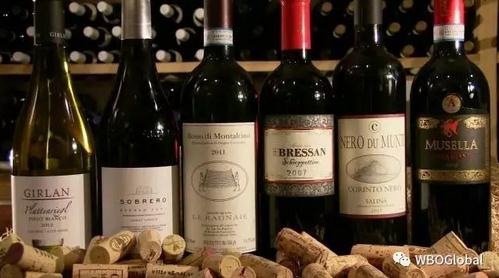Maybe Your Italian Wine Could Sell more in China
WBO Column writer | Jerry
Translate and edit | Kiwi
In recent years, some friends of mine has turned to embrace Italian wines, especially those who used to drink Australian and Chilean wines. But in terms of its market share, Italian wines didn’t perform as well as other regions in China, even though markets with excellent economic status has developed a lot during the past decade, including drinkers increase, taste change and rise of wine education.

photo credit: Italian Wine & Spirit Course Award Ceremony in Beijing
No one can deny the diversity, complexity and excellent price value that Italian wines has brought if he/she once got a chance to taste and learn it.
One thing to bear in mind is that diversity and complexity in Italian wines is a double-edged sword, it can either attract consumers or shut them out. Let me explain further. When wine sales introduce you a bottle of “Conegliano Valdobiadene Prosecco Superiore DOCG”, you will be confused at the complicated information of this wine. Will you pay for a stuff that you even don’t know its basic information? On the contrary, it’s more recognizable for Chinese consumers to remember the Chinese name of “Champagne”, which stands for high-end and triumph, same as the case of Gaja from Piedmonte.
Dry wines with straight forward taste and easy to approach are preferred in entry-level market. They are medium in acidity, tannin and alcohol, sweet fruit and oak flavor, 13% or more alcohol level, neither too astringent nor too rough. In terms of pricing, CNY 250 to 300(€34.21-41.05) will be reasonable.
For the sake of attracting more consumers, Chinese importers could negotiate with wineries to produce wines that fit Chinese taste. As most of Italian wine merchants that I kept in touch have put it, Nero d’avola from Sicily in Southern Italy sells best among all other varieties. Deep color, high alcohol, hints of sweet fruit and spice, smooth tannin, all the characteristics made it the prime example to challenge Australian and Chilean wine.
However, I think it’s just a temporary expedient. Consumer’s taste is changing with the rise of consumer’s economic and consumption level, they are likely to drink medium or high-end wines and eager to know more about other wines apart from wines they usually drink. At this point, Italian wine is the best of the best choice.

photo credit: internet
When you promote your Italian wine to entry-level drinkers, you’d better highlight the diversity, uniqueness and price value that Italian wine can bring to them .
On the other hand, it's necessary to strengthen the promotion of entry-level Italian wine from southern Italy such as Sicily and Puglia, which was considered as “New World” of Italy.
I know some importers started with cheap wines from southern Italy and enlarged with more medium or high-end varieties after their business on track. Importing by container-sharing is the one of the efficient way to cut down logistics cost. Another way for Italian wine importers to reduce cost is to negotiate with those regions and wineries in applying for promotion subsidies from European Union.
Wineries are willing to provide more benefits and supports when importing reached a large amount.

photo credit: internet
Choosing one or two favored wine regions are recommended for importers. Too many varieties and different labels in the same variety will be likely to result in a lack of feature and fierce competition inside. Strive for good price from wineries and ensure logistics safety, never do what should be done by distributors.
Besides, products should be divided in different channels when importers are serving as intermediary in upstream and downstream business relationship.
For those who mainly engaged in retailing and restaurant channel, it needs much more efforts in consumer experience building. Back to the entry-level market, it’s more effective to make the professional guideline such as tasting, training course, seminar and wine dinner to consumers rather than just aimless advertisement.